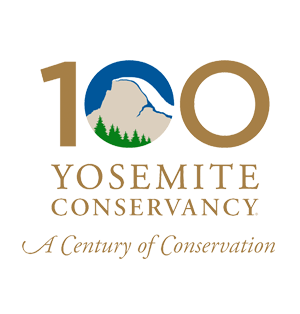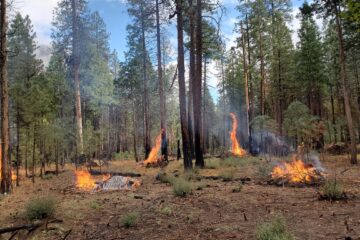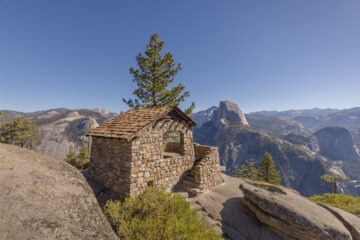High above Yosemite National Park, the night sky inspires a sense of awe and wonder. It encourages stargazers to consider the scope of time and space, it inspires creativity and learning, and it supports the health of all life on Earth. Stargazing in Yosemite is an immersion in the natural world and a deeply human experience. For millennia, our ancestors have gazed at these same stars, weaving them into their understanding of themselves, their shared histories, their stories.
Stargazing in Yosemite is an amazing way to connect with oneself, and the broader history of humanity and wildlife in the park. Learning about the stars can also be an easy connection to other environmental issues, including light pollution (read below to learn more on this).
You can pretty much spot the starry night sky from anywhere in Yosemite, but we thought you might like to know a little bit more about the importance of night skies and where we think some of the best stargazing in Yosemite happens.
Light Pollution’s Effect on Nature and You
Too much artificial light — meaning any human-made light source that isn’t naturally occurring, like the sun or moon — can disrupt wildlife, impact human health, contribute to climate change, and disrupt our connection to the night sky. In other words, this over-lighting of outdoor spaces effectively pollutes many parts of the world with disruptive light.
Light pollution is important to acknowledge and understand because it hides stars behind a glow of artificial light AND can also affect:
- Wildlife and ecosystems. Many creatures — including amphibians, birds, mammals, plants, and more — depend on the predictable cycles of day and night to reproduce, forage, recharge, and more. Increased light pollution disrupts these natural cycles and can have negative and deadly effects.
- Human health. Humans have also evolved to the natural rhythms of day and night, and we depend on darkness for sleep and energy. When night cycles are disrupted by artificial light, it can have cascading negative effects on human health, including increased risk of obesity, diabetes, cancers, and more.
- Climate change. Over-lighting releases unnecessary levels of energy, energy that requires the burning of fossil fuels and thus releases carbon dioxide when created. In this way, pollution exacerbates the impacts of climate change by contributing to unnecessary increased energy consumption and greenhouse gas emissions.
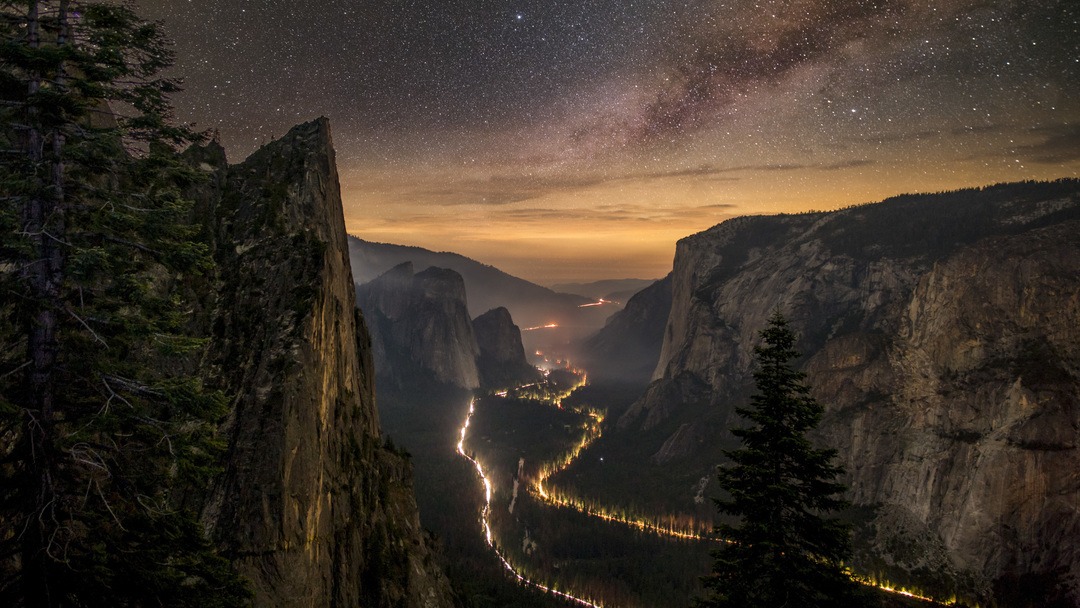
Sentinel Rock and Yosemite Valley under the night sky, with car lights snaking along the roads below. © David Applebee.
Six Special Spots for Stargazing in Yosemite
The best spots for stargazing have unobstructed views of the sky and are far away from artificial light (buildings, outdoor lighting, etc.). These six special stargazing spots are all within a 60- to 75-minute drive from Yosemite Valley, are just far enough away from artificial light, and have incredible, open views of the night sky.
Remember, the less light there is from the moon, the more visible the stars will be. If you’re interested in stargazing, try planning your Yosemite trip for times of the month when the moon is not full.

1. El Capitan Meadow
In the heart of Yosemite Valley sits the El Capitan Meadow. As the name suggests, this meadow offers stunning views of the El Capitan cliff face and the sky above. When stars dot the night sky in the spring and fall, visitors can partake in a different kind of stargazing in Yosemite … watching the headlamps of Yosemite’s rock-star rock climbers on the face of El Cap!
You’ll get the best view of our big wall stars from the meadow’s fence line — if stargazing, be forewarned that there is regular car traffic passing by the meadow. Remember, you must stay on designated trails to protect the meadow and to prevent social trails. Please don’t tread into the meadow.
At El Cap Meadow during the day? Take a moment to learn more about rock climbing at the meadow’s northern edge through the Ask a Climber program!
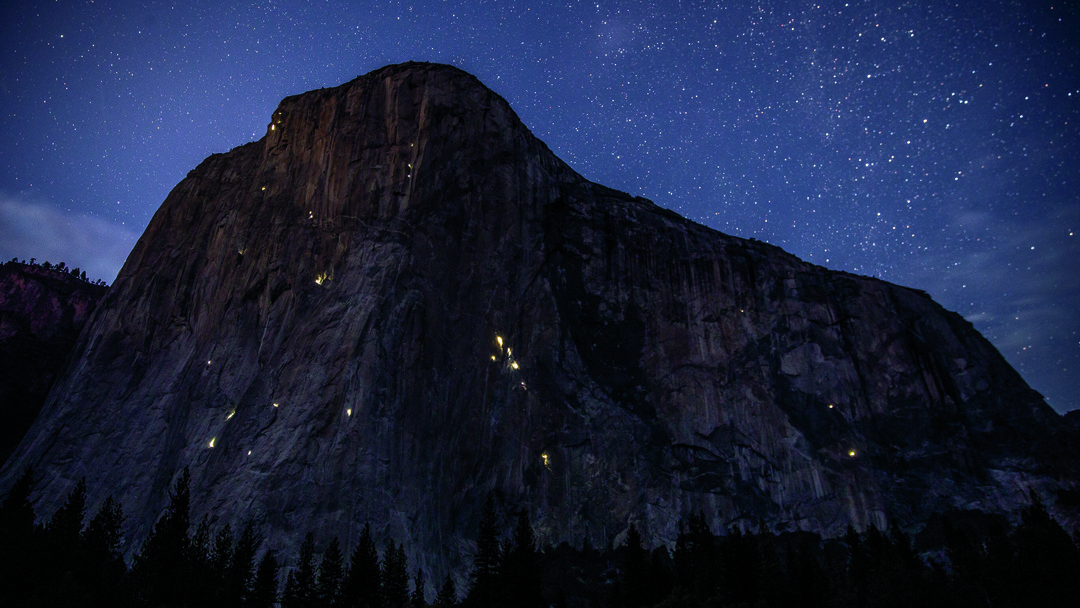
At night, rockstar rock climbers’ lights dot the face of El Capitan, bringing a new meaning to stargazing in Yosemite. © Kristal Leonard.
2. Cook’s Meadow Boardwalk
Farther into Yosemite Valley, a wooden boardwalk winds its way through Cook’s Meadow, offering nighttime visitors a peaceful observation point for stargazing in Yosemite. As you follow the boardwalk’s path, each step takes you farther from roads and artificial lights, and closer to breathtaking views of the night sky, Yosemite Falls, and towering granite cliffs. Built with support from Conservancy donors, the boardwalk also plays a vital ecological role, helping water move naturally through the meadow and protecting sensitive habitat. As you stargaze, take in the breeze through the grasses, the distant roar of Yosemite Falls, and the quiet stir of meadow life — all part of what makes this place so unforgettable.
Bonus fact: The boardwalk and the greater Yosemite Valley are popular spots for Yosemite Conservancy’s Stargazing Naturalist programs — learn more below!
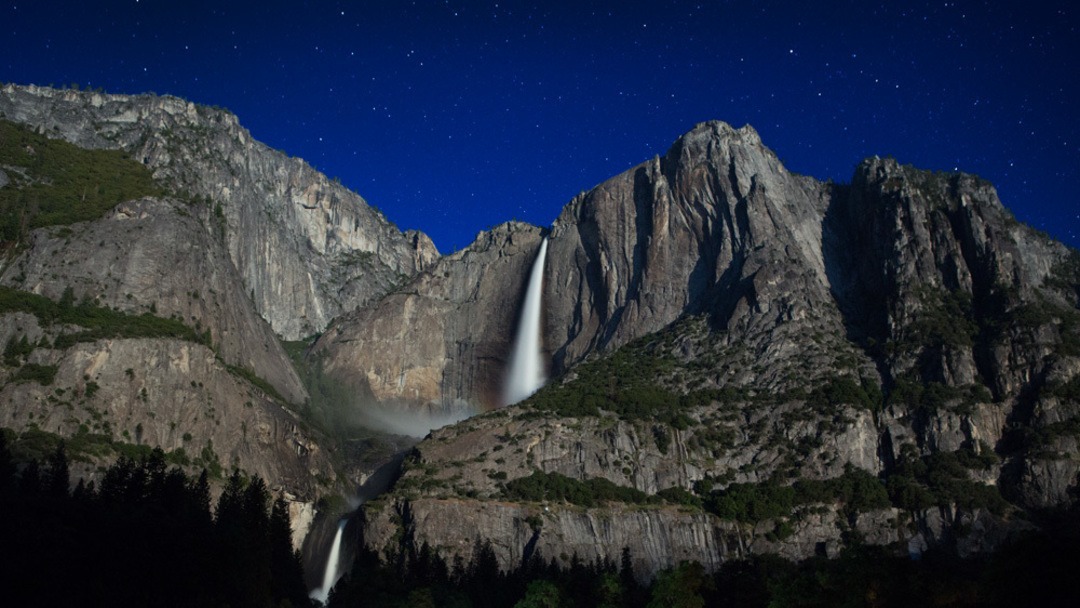
Yosemite Falls aglow after dark. © Alexander H. Kershaw.
3. Glacier Point
High above Yosemite Valley — over 3,000 feet above — the Glacier Point lookout offers breathtaking views of the Valley floor during the day, and just as jaw-dropping views of constellations over Half Dome at night. That being said, this stargazing spot isn’t much of a secret, so be prepared for crowds.
If you’re looking for a quieter spot and up for a short hike, the 0.7-mile walk to Sentinel Dome offers a 360-degree view of Yosemite and the sky above. If hiking, please do so safely: bring a headlamp, stay on designated trails, and prepare for the unexpected, including potential wildlife encounters.
It takes about an hour to drive out to Glacier Point from Yosemite Valley, and it’s important to remember that the Glacier Point Road closes seasonally in the winter — typically from mid-November through late May or early July. When the road is closed, it’s not possible to drive up to Glacier Point, so please check park closures before heading out to stargaze.
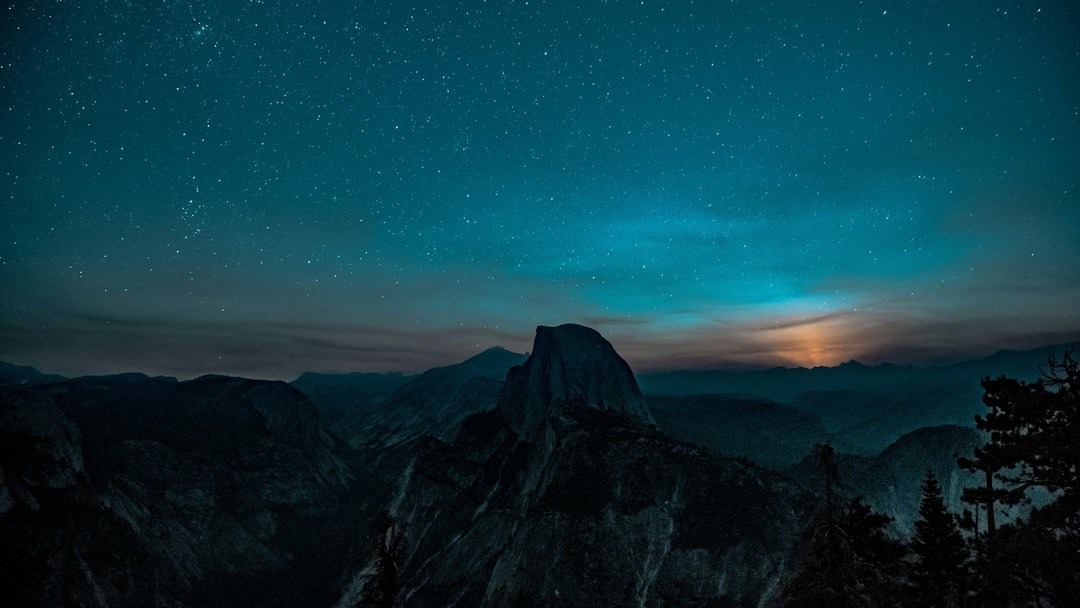
Views of Half Dome from Glacier Point. © Casey Horner.
4. Wawona Meadow
Down at the southern edge of Yosemite, sequoia trees reach towards the skies to say hello to the stars. Here, visitors can also contemplate the night sky, with particularly expansive and calm views in Wawona Meadow. This quiet, low-elevation meadow is surrounded by forest, offering stargazers a beautiful, low-traffic spot to spend a couple of hours under the stars.
It takes nearly 50 minutes to drive to the meadow from Yosemite, but less than 5 minutes to drive from Wawona Campground — so whether you’re passing through or staying nearby, be sure to pause to look up at the sky.
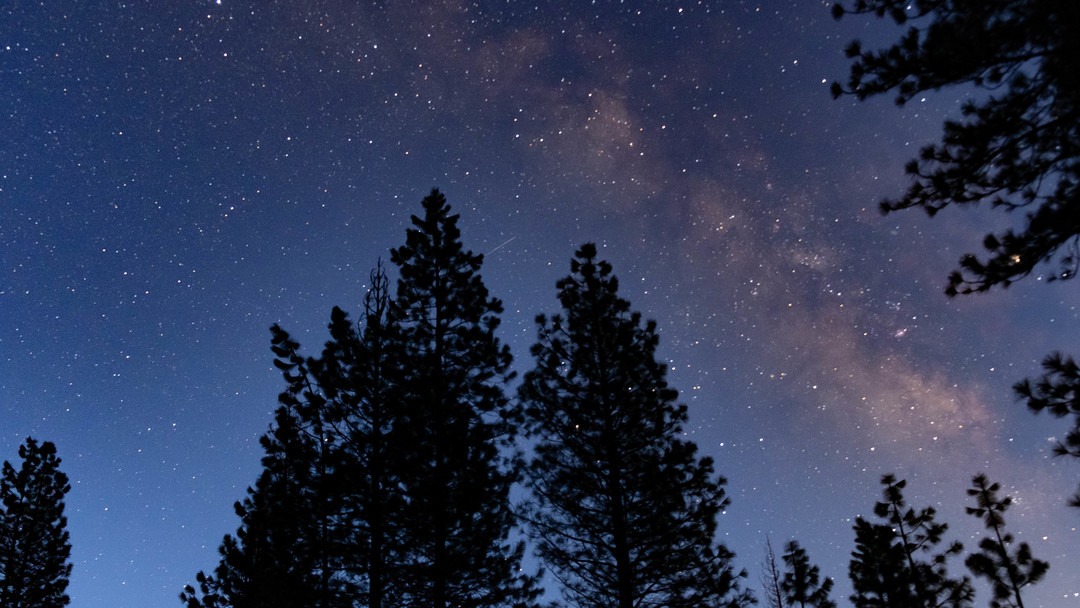
The Milky Way glimmers over Wawona trees. © Brian Washburn.
5. Tenaya Lake
On the opposite end of the park, Tenaya Lake is nestled among the peaks and valleys of Yosemite’s high country. Here, the alpine setting offers a crystal-clear view of the night sky, with minimal light pollution and crisp mountain air. Tenaya Lake is an extra special spot for stargazing in Tuolumne Meadows — the lake’s calm waters showcase stunning celestial reflections, perfect for catching meteor showers or the full arc of the Milky Way.
Visitors can also turn their night sky viewing into a night hike by venturing out on a mostly flat, 2.5-mile hike on the newly finished trail around the entirety of the lake’s shore. Learn more about the Tenaya Lake Loop Trail here.
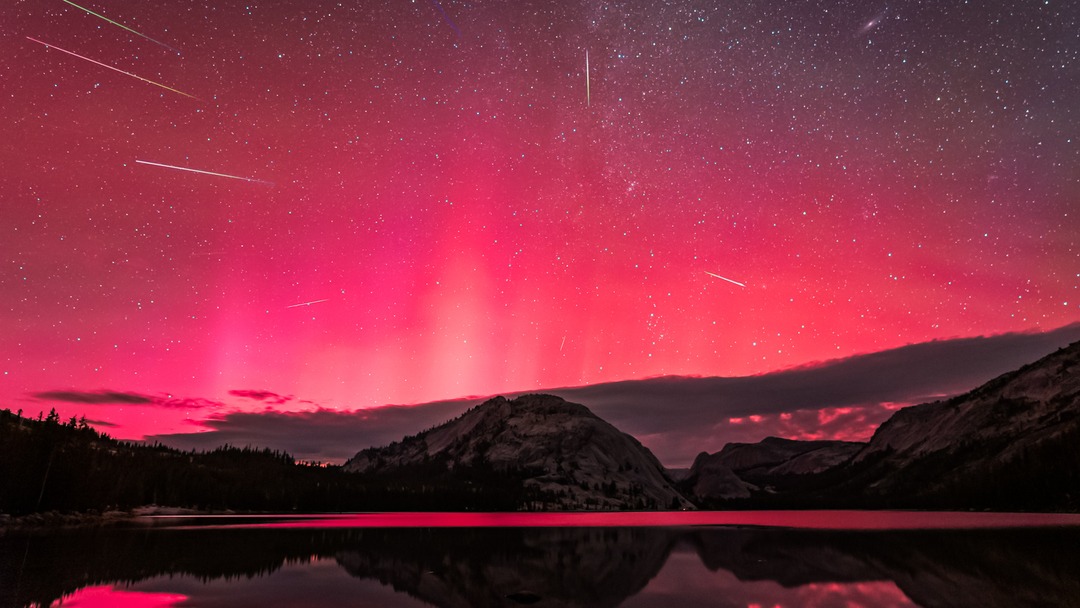
Perseids Meteor Shower over Tenaya Lake. © Rick Whitacre.
6. The Backcountry!
What spots in Yosemite are farthest away from artificial light and have the best unobstructed views of the sky for stargazing? The backcountry, of course!
Over 94% of Yosemite National Park is designated wilderness — a.k.a. 700,000+ acres of remote and undeveloped park land. This means that visitors who opt to backpack in the park are almost certainly guaranteed* breathtaking views of the night sky and the Milky Way (*except if it’s cloudy, a tree is blocking your view, your eyes are closed, etc.).
Two of our favorite spots for backcountry stargazing are May Lake and Glen Aulin. The wide-open skies and minimal light pollution due to high elevation, are why these spots are perfect for stargazing from the comfort of your sleeping bag.
One acre is about the size of a U.S. football field … so 700,000+ acres is a lot of space for stargazing in Yosemite, and a potentially daunting number of options for novice backpackers and stargazers. Our advice: take the pressure off and join a guided overnight stargazing program with Yosemite Conservancy, where you can discover the night sky alongside our expert naturalists! Click here to view the full calendar of upcoming Outdoor Adventures.
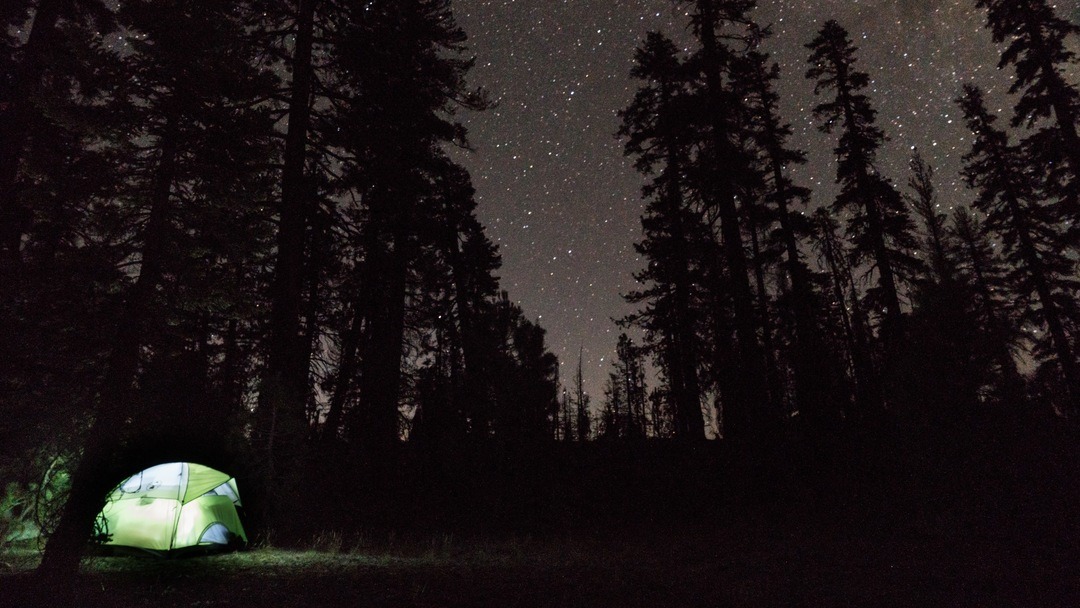
Outdoor Adventures overnight backpacking program to Half Dome and Clouds Rest. © Matt McIvor.
Dive Deeper and Join a Stargazing Program!
Minimal light pollution makes Yosemite a perfect spot for stargazing — and the local naturalists make it all the better! Join a naturalist- or ranger-led night sky program to take stargazing in Yosemite a step further and learn about star science, constellations, planetary science, night sky mythology, and more.
Yosemite Conservancy stargazing programs capture the wonder of the night sky from Yosemite Valley. From late March to late November, Conservancy naturalists take groups on a stargazing journey, using laser pointers to single out specific stars, planets, and constellations. And, to make it even better, these naturalist-led programs are family-friendly!
The Conservancy also offers night sky backpacking programs, including an unforgettable trip to May Lake during the Perseid meteor showers. Check the Outdoor Adventure calendar to see if any overnight stargazing programs are available!
The National Park Service’s summer ranger-led astronomy programs take place at Tuolumne Meadows and Crane Flat. Supported by funding from Yosemite Conservancy donors, these park programs connect visitors to the stars and empower them to become stewards of the night sky. For the most current schedule of ranger-led programs in Yosemite see the park’s online calendar.
